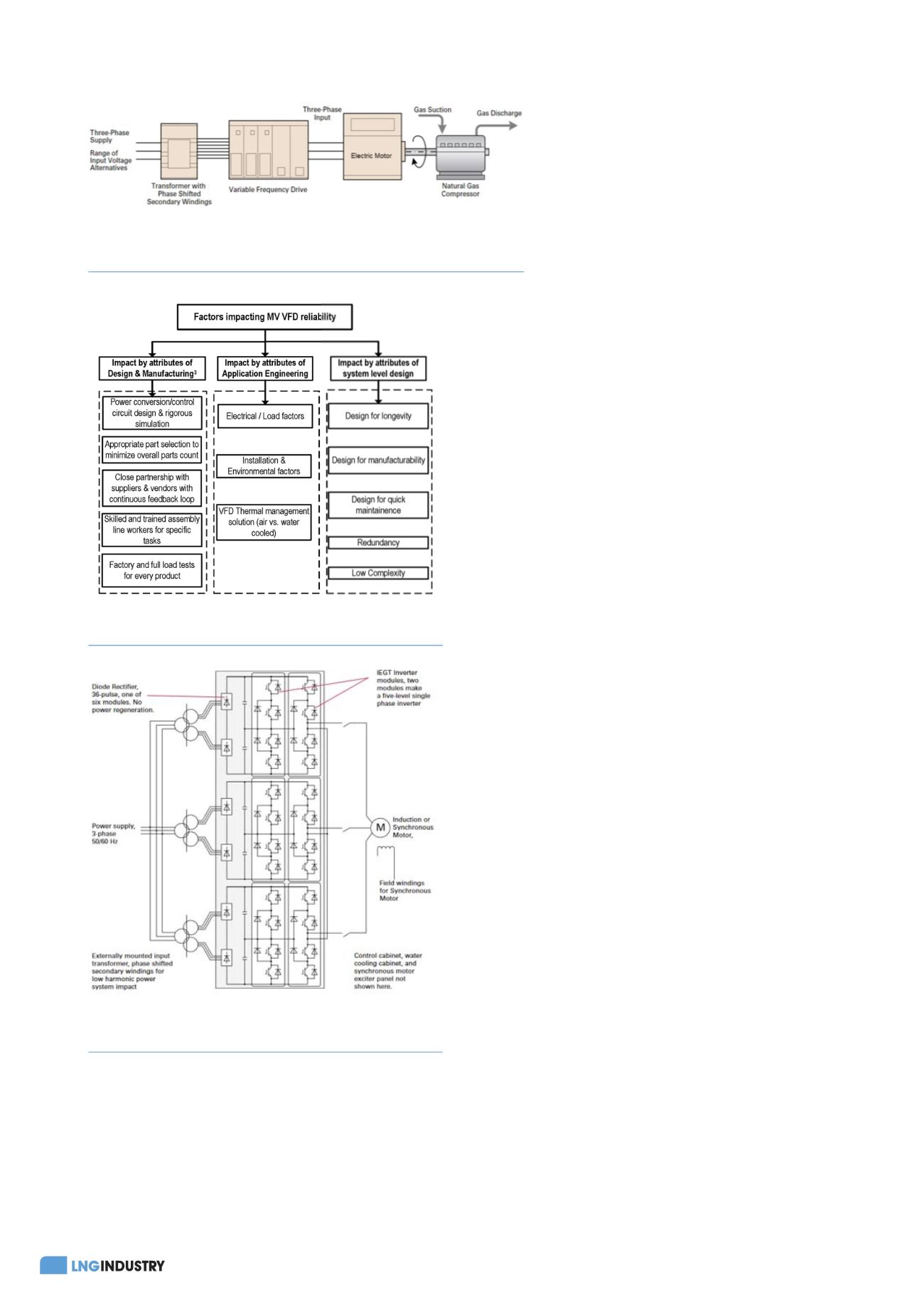
32
April 2020
use of very large gas compressors. For the best utilisation of
cargo, large compressors ranging from 10 to 70 MW are used
to compress gas to 1/600
th
of its initial volume.
Many of the large LNG compressors in use today are
driven by gas turbines. These offer acceptable reliability, as
well as the convenience of using some of the gas being
compressed as a fuel source. However, burning gas as fuel
releases nitrogen oxides (NO
x
)
–
a family of poisonous, highly
reactive gases known to cause asthma.
2
This
hazard presented by NO
x
prompted the US
Environmental Protection Agency (EPA), on 6 April
2018, to retain, without revision, the current
national ambient air quality standards (NAAQS) for
oxides of nitrogen.
2
Taking this into account, large
capacity electric motors, powered by variable
frequency drives (VFDs), can offer a solution to
help localities to reduce NO
x
concentrations, and
to manage their compliance with emissions and
environmental regulations. Indeed, the primary
benefit of electric motor-VFD systems is that they can be used
to drive large compressors without directly burning fuel.
More uptime and higher
efficiency
The facts above and the steady development of power
semiconductors have revealed the advantages of using
the electric motor-VFD system. For example, an electric
motor-VFD system, as depicted in Figure 1, permits controlling
flow and pressure through speed control and can improve
the power factor of the power supply. Concerns with regards
to harmonics have been addressed with proper isolation
transformers and by the continuous development of VFD
technology.
As with all new technology, or a new application of an
existing technology, some operators are cautious about using
the electric options of a motor-VFD system. Most reservations
about the use of electronic apparatus and VFDs have origins
in bad experiences caused by procurement decisions,
misapplications and maintenance difficulties due to the
intrinsic quality of the VFD. Conversations often start with the
question, “how reliable is the VFD?”, and, naturally, the
invoking of the word ‘reliable’ elicits many responses. The two
most relevant questions are whether the system can operate
uninterrupted between planned shutdowns, and, in the case of
unplanned maintenance, how soon the system can return to
production? These concerns are swiftly put to rest by a
comparison of the upside and perfomance of the motor-VFD
system with that of a gas turbine.
A motor-VFD system provides more uptime than a gas
turbine, thus it is less expensive to own. Furthermore, a
motor-VFD system boasts superior efficiency compared to a
gas turbine: 97% versus 20 – 40%, respectively, depending on
the load and temperature.
4
Table 1 shows some quick cost
comparisons of a gas turbine and an electric motor-VFD. The
comparisons do not reflect the costs with precision, but they
are effective in highlighting the proportions.
In terms of LNG production, unplanned and long
interruptions can cause losses of thousands of dollars per
hour, not only due to maintenance costs, but due to loss of
revenues at a rate of US$1 million per day.
5
Reliability is defined as the probability that a product or
service will operate properly during its lifespan, under
intended operating conditions. It must be intrinsically
designed into the product (in this case, into the VFD).
6
At the
design stage, in the name of ‘building-in’ reliability, significant
effort is expended to ensure longevity, manufacturability and
ease of operation and repair.
Besides the intrinsic quality of the design, the
manufacturing practices and the correct application of the
VFD are also determinants of reliability (as summarised in
Figure 2.
Factors determining the reliability of large VFDs.
Figure 1.
High power motor variable frequency drive (VFD) system driving
an LNG compressor.
Figure 3.
Configuration of a VFD using a small number of
silicon devices.








